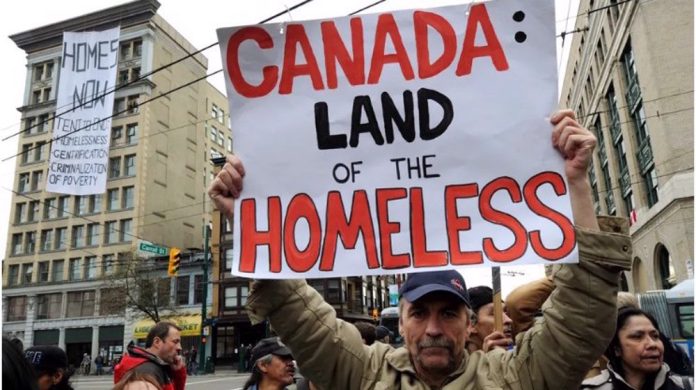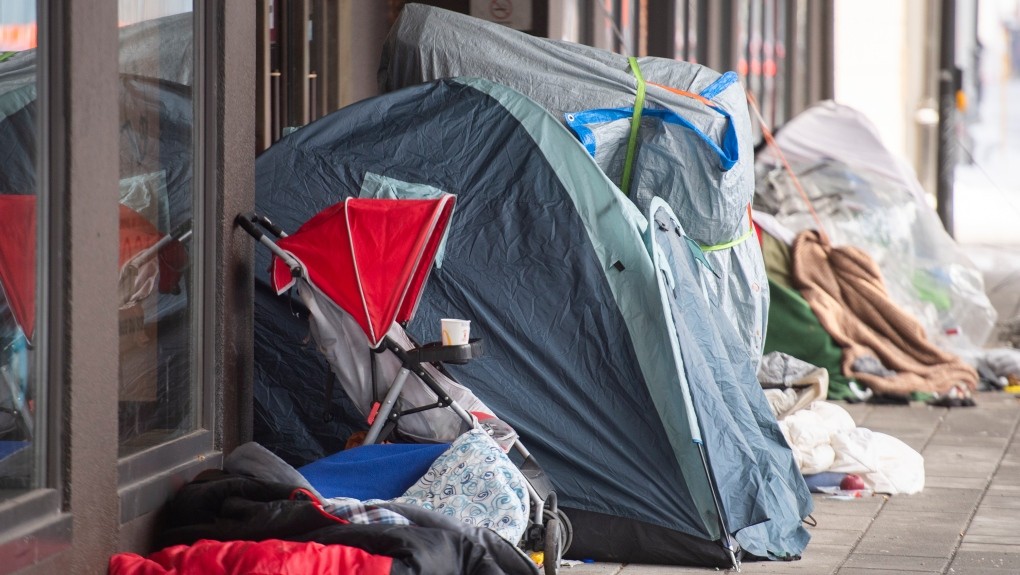A growing number of people in Canada are being forced to live on the streets, in shelters, or in unsanitary conditions as a result of the country’s homelessness crisis.
The Ministry of Health and Social Services recently requested a report from Quebec’s public health institute (INSPQ), which revealed a 44 percent increase in homelessness from 2018 to 2019.
According to a 2016 State of Homelessness report, there are at least 235,000 homeless people in Canada. Canada’s annual homeless population is thought to range between 150,000 and 300,000, according to The Homeless Hub, a national research organization.
Researchers do warn that the official government statistics significantly understate the true scope of homelessness in the country. The alarming increase may be a sign of a crisis that is not only affecting major cities but is also affecting smaller towns.
However, because many homeless people live in secrecy, it can be challenging to calculate the precise number of homeless people. To put it another way, they temporarily live in squats or host friends and family. One and a third of a million Canadians, on average, are thought to have lived in unstable housing or been homeless.
“We are significantly underestimating the number. According to Cheryl Forchuk, a professor at the University of Western Ontario, “we could probably triple the current federal estimates.”
In 2018, Quebec conducted its first province-wide survey on homelessness, counting a total of 5,789 people who were “visibly” homeless. But by 2022, this number had increased to 10,000.
According to the report, instead of Montreal as it had previously been the case, one in two homeless people in Quebec can now be found in rural areas of the eastern province.
Granby’s mayor, Julie Bourdon, told the media that “visibly homeless people did not exist in Granby three years ago,” despite the fact that “rents are very high now compared to two years ago.”
The new data shows that those who are Indigenous have a disproportionately high risk of homelessness. In Canada, 43% of the population identify as Indigenous, but over 30% of those without a permanent residence also identify as Indigenous.
According to Karine Lussier, director of a local anti-poverty organization, “Indigenous people, who make up 5% of the Canadian population, are particularly over-represented in the streets, especially the Inuit.”
A severe housing shortage is affecting Quebec, the second-most populous province in Canada, as a result of a number of factors, including the pandemic and record-high immigration that is raising population levels and driving up demand.
The homeless crisis was called the “perfect storm” by Quebec’s premier, Francois Legault.”
“10,000. This is the number of people who are sleeping on the streets of Quebec. For a developed society with empathy like ours, this is unacceptable, he recently said.
In September, Prime Minister Justin Trudeau acknowledged, “We now find ourselves in a situation where even well-off people have difficulty with housing.”
Experts worry that Canada will be faced in 2023 with an alarming and escalating homeless crisis that necessitates immediate attention and comprehensive solutions due to the rising cost of living and soaring inflation.
The homeless crisis in Canada has been made worse by elements like rising housing costs, economic inequalities, and the ongoing COVID-19 pandemic.
Families, veterans, young people, and other vulnerable groups are disproportionately affected, with many being forced to live on the streets, in shelters, or in subpar housing conditions.
Numerous negative effects of this crisis include weakened public health, elevated crime rates, and overburdened social services.














